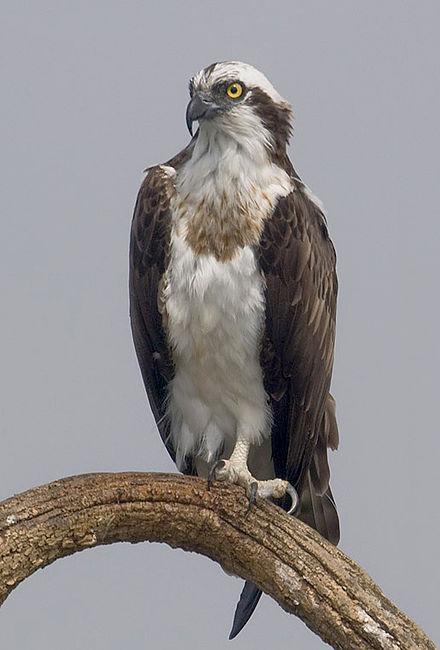"Osprey: Sea Raptor" is a British documentary about - you might just have guessed it - ospreys. It´s made by Love Nature, which has also produced a huge number of other nature documentaries. While ospreys do exist in Europe (including Sweden), "Osprey: Sea Raptor" is taped in the United States. The ospreys have a breeding colony at the Connecticut side of the Long Island Sound. As the bird flies (pun intended), it´s not *that* far away from New York City!
The osprey is a large raptor (diurnal bird of prey) specialized in diving for fish, which it catches with the help of its long claws. It´s sufficiently different from other raptors to be placed in a family all its own. The documentary follows an osprey couple (these birds usually bond for life) as it returns to the Long Island Sound from South America, where it migrates during the winter. Ospreys often reuse the same nests or nesting sites year after year.
While ospreys are pretty large, they can be challenged by both bald-headed eagles, cormorants and the great black-backed gull. In the documentary, the osprey punishes the cormorants by swooping down on their colony, and also manages to fend off the eagles, while the gull (which is of enormous size) turns out to be more of a problem! On land, foxes can sneak into osprey nests that aren´t elevated enough, and simply eat the eggs. Interestingly, humans living near the marshes help the ospreys by building nesting platforms.
I never seen an osprey IRL, and probably wouldn´t want to live too close to one of their colonies, but I admit that "Osprey: Sea Raptor" is well-produced and even somewhat fascinating.

You may want to visit Northwestern Ontario. Think Wabigoon River out of NorthStar. I was dive bombed by kingfishers, encircled by eagles young and old, and had an Osprey dive into the river not 10 yards away from my little 16' boat to grab a nice looking Northern Pike up and out for dinner! And yes these are real fishes...
ReplyDeletehttps://www.northstarlodge.com/Photos.html
Wow!
ReplyDeleteMy friends in Canada are very much aware they have water resources that will be much in demand, maybe as soon as the next 100 years. With a population 1/10th of the US (38.5 mil) most live within 50 miles of the border. Much like Minnesota, the "Land of 10,000 lakes" actually 11,842, which has a large Nordic population as well.
DeletePS: My rainbow icon is a photo I took on that exact river system.
DeleteFrequently get the Northern Lights as well as shooting stars and the Milky Way galaxy overhead.
Interesting. Northern Lights in Oregon? I assumed they were only visible in, say, Alaska or the Yukon.
ReplyDeleteNorthwestern Ontario, dear Sir!
Deleteoh yes, I recall hearing something last week about the Aurora being seen in Oregon and even Arizona! due to a solar eruption.
Deletehttps://www.businessinsider.com/photos-aurora-northern-lights-rare-appearance-south-solar-storm-2023-3
Solar flares are an interesting phenomenon as they could disturb the Earth's electromagnetic field and wreak havoc to
energy grids.
https://www.space.com/solar-flares-effects-classification-formation
Here's Johnny!
Deletehttps://sdo.gsfc.nasa.gov/
Ooops, I mixed up Ontario and Oregon?! Must be getting senile or something... Yes, Canada is a different thing, obviously.
ReplyDeleteIn Sweden, the aurora is usually seen far north, in Lapland, but occasionally it appears around Stockholm or, just the other day, Småland (even further south). But everytime I´m around, it´s a cloudy evening or something, so I never seen it!
ReplyDeleteAnyone can have a *senior moment* even if not a senior ;-}.
DeleteImagine a shimmering curtain in usually (to me) shades of lime green that can vanish as quickly as it appears, probably due to Earth's rotation away from the source.